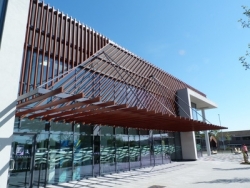What is BIM?

Posted on 18/01/2018
BIM. Three letters that are radically reshaping the construction landscape – and that, for those of us in the industry, are becoming increasingly hard to ignore.
It’s possible that you might know BIM inside out already. If so, good work – you’re more prepared than most, and excellently positioned to face whatever twenty-first-century construction throws at you.
But if you don’t, you’re far from alone. A lot of people have a vague awareness of BIM and what it is – but not enough to know how they can apply it in their own working lives.
So, let’s go back to basics. What is BIM?
The bad news is that a precise, universally agreed upon definition doesn’t exist. In fact, the exact meaning is still hotly debated.
But here’s the good news - the loose principles the experts do agree on have huge potential to help architects improve efficiency, cut costs, and make their construction projects bigger and better than ever.
The first thing you need to grasp is that BIM isn’t a ‘thing’ – a physical object, a piece of software, or similar. It’s a process.
BIM stands for Business Information Modelling. At its simplest, it’s a way of collaboratively designing and carrying out construction projects using digital technology.
On a BIM project, all the key data is stored digitally, so it can be accessed and edited at any time, by any of the individuals or organisations involved.
That information might include specifications, schedules, performance requirements, cost plans and more.
It’s also likely to include technical drawings – and under BIM, all the different drawings supplied by various members of the project team are combined into one 3D model to ensure they fit together.
The non-graphical data is then linked to that model – so that if a user clicks on a window product in the model, for example, they’re shown information on who made it, how long the lead times are, how it performs, and when it’s likely to need replacing.
Together, it’s known as a project information model – and it structures information more clearly, making it easier for people working on the project to find the data they need, and letting teams build high-quality assets more efficiently.
What’s more, it becomes a hugely valuable resource for end users when the project is complete. Once the building has been handed over and is in use, the project information model becomes an asset information model, and can help users better understand how the finished structure is performing.
There’s obviously a cost to making your organisation BIM-capable – much of which goes on training. But that expenditure is heavily outweighed by the potential benefits.
It’s estimated that badly organised information adds as much as 25% to the cost of the built environment – and that by using BIM to make that information clearer and easier to access can yield efficiency savings of up to 20%.
For architects, BIM offers the opportunity to work collaboratively, embed quality control in your work processes, and achieve a consistency of output that raises customer confidence and helps you build your brand.
It also lets you significantly boost your efficiency, without constraining your ability to be creative. Over time, you’re able to accumulate 3D models of various building components, leaving you with a kit of parts you can use to design a huge variety of different buildings.
But architects are doing relatively well on the BIM front. The organisations who are lagging behind the most are subcontractors and suppliers.
Many aren’t yet able to offer the sort of 3D product drawings that can be incorporated into project information models. As BIM becomes more widespread, and specified more frequently – BIM level 2 is already compulsory for all publicly-procured construction projects in the UK – businesses like these are going to become increasingly difficult to deal with.
But at Solinear, we’re fully on board with BIM. We’ve invested in a dedicated website, offering free-to-download BIM files of an extensive array of our louvre and solar shading projects for architects to incorporate in their projects.
If you’re interested in our approach to BIM, visit www.solbim.co.uk, or call us on 03125 475524.


